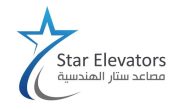
A circulating job card is issued with each job to record the labor hours spent on different operations and the total labor cost on completion of the job. Under job costing, production is undertaken by a manufacturer against a customer’s order and not for stock. Direct expenses are the costs that can be traced back to the spending of a specific department. These include expenses like design costs, tool maintenance and purchasing equipment that is directly used to manufacture the product. They’re listed under the COGS (Cost of Goods Sold) section in the income statement.
- The WIP inventory asset account is where the actual direct materials cost, actual direct labor cost, and estimated manufacturing overhead costs are recorded in order to determine the COGM.
- The predetermined manufacturing overhead rate is computed before the period starts, usually at the beginning of a year or quarter.
- These costs include payroll taxes but can also include third parties and subcontractors.
- No matter who the customer is, they all end up receiving the same product.
- On completion of the job order, the cost of the entire job is shifted from work-in-progress inventory to finished goods inventory.
On January 1, Cincy Chips estimates that they will produce 50,500 microchips and run 2,080 machine hours in the upcoming year. The cost formula to estimate manufacturing overhead at the beginning of the year is $128,960 fixed plus $33 variable overhead per machine hour. Compute the organization-wide predetermined manufacturing overhead rate using the template provided in Exhibit 2-4. Organizations that produce unique or custom products or services typically use a job-order costing system.
Integrating EVA and process-based costing
There are two ways to adjust for the under- or overapplied overhead amounts. The processes to solve the following scenario are demonstrated in Video Illustration 2-5 below. The manufacturing process has two departments—fabrication and finishing.
This can cause long hours for the cost accountant at the end of a job, since the company controller will want to issue an invoice as soon as possible. The job cost sheet shows the direct material costs, direct wages, and overheads applicable to respective jobs. The job cost card must be designed to suit the needs of the organization. In contrast, when overhead is overapplied, manufacturing overhead costs have been overstated and therefore inventories and/or expenses need to be adjusted downward.
When to Use Job Costing
All manufacturing costs incurred to complete a job are recorded on job cost sheets. A standard job cost sheet records all direct material, direct labor, and manufacturing overhead costs applied to a job. Typically, a job cost sheet also records the total costs, the number of units, the cost per unit, as well as the selling price for each job. A job profitability report is like an overall profit & loss statement for the firm, but is specific to each job number.
- For example, Coca-Cola may use process costing to track its costs to produce its beverages.
- Link all four dependencies to avoid costly bottlenecks and set the baseline to track costs in real time throughout the software.
- For instance, Jack will likely discover that actual overhead is more or less than $150,000.
- Indirect costs are any materials that are needed to supplement the production process.
- Another obvious choice for job costing is the custom manufacturer (for example, one that constructs customized yachts), so that it can compile costs and bill them through to the client.
Direct labor is typically assigned to a job with a timecard (using a punch clock), timesheet (where hours worked are recorded manually), or with a networked time clock application on a computer. This information can also be recorded on a smart phone or through the Internet. In all cases, the user job costing definition must correctly identify the job, so that the cost information can be applied to the correct job. In a true job cost accounting system, a budget is set up in advance of the job. As actual costs are accrued, they are compared to budgeted costs, to determine variances for each phase of each job.
Features of Job Costing
The computer files can be queried in many ways and generate more than a simple job cost report. A bill of materials (BOM) is a list of all materials and parts required for a specific job. Process costing, on the other hand, is used when companies offer a more standardized product. No matter who the customer is, they all end up receiving the same product. Over 1.8 million professionals use CFI to learn accounting, financial analysis, modeling and more. Start with a free account to explore 20+ always-free courses and hundreds of finance templates and cheat sheets.
- It helps the company make estimates about the value of materials, labor, and overhead that will be spent while doing that particular job.
- This chapter focuses on the job costing technique, and the next chapter will look more closely at process costing and other options.
- The unit of costing, under any job costing system, is a job or specific work order.
- In either case, the form will instead include a part or serial number.
